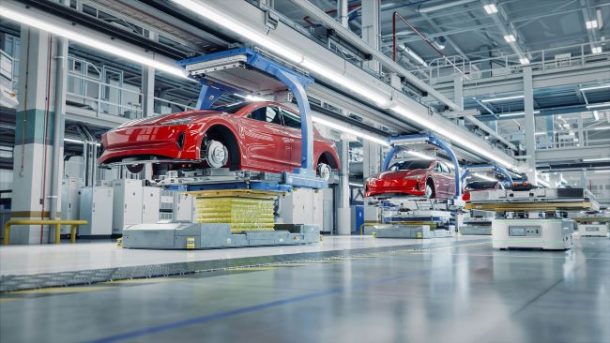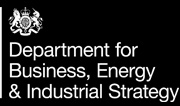
NAA Member News: Accelerating to Net Zero in the Automotive Industry – Businesswise Solutions
More than 18% of the UK’s total emissions are linked to the automotive industry. It is no surprise then, that the automotive sector is integral to net zero targets set out by the UK government.
Automotive manufacturers have the unique challenge of needing to achieve their own net zero targets as a carbon-emitting industry, in addition to meeting the challenge of manufacturing millions of zero-emission vehicles by 2035 (although we will have to wait and see whether this target will be pushed back).
Currently, many of these emissions are classed as scope 3 emissions (mainly from tailpipe emissions of vehicle use), but as the sector manufactures more Electric Vehicles (EVs), and fewer Internal Combustion Engine (ICE) Vehicles, we would expect the emissions mix from the industry to change, as emissions currently classified as Scope 3 (downstream) will see a drastic reduction as emissions from EV use become linked to the ‘grid factor’ where the charging takes place. In return, these emissions will not simply disappear but will reappear as production emissions, as currently manufacturing emissions for EVs are around 40% higher than their ICE counterparts.
This chart shows the total CO2 emissions (blue bar), and CO2 equivalent per vehicle from vehicles manufactured in the UK from 2001 to 2022. Over those 20 years, we have seen total emissions go from over 1.8 million MtCO2e in 2001, to just under 600,000 MtCO2e in 2022, a reduction of 66%.
Some of the reduction in emissions can be attributed to a changing mix of energy on the grid, some to the changing mix of ICE, EV and hybrid vehicles being produced, and some could be attributed to carbon efficiencies being made throughout the industry.
It’s worth noting that during the period 2020 – 2022, there was a reduced number of vehicles manufactured in the UK, hence the lower emissions from the sector. The emissions per vehicle rate increase that started in 2019 is down to consecutive year-on-year records for the number of EVs manufactured meaning small increases in emissions per vehicle in recent years.
Facility Emissions from the Automotive Industry
Automotive manufacturers should be aware of the emissions that happen within their manufacturing facilities to meet any reduction targets in place. These emissions that happen at the facility level are known as Scope 1 and Scope 2 emissions.
Scope 1 emissions are known as ‘Direct Emissions’, and occur when a fuel, such as natural gas, is burned to generate electricity, or heat, or used within another process.
Some of the ways that Scope 1 emissions can be reduced are through:
- Optimising the heating system
- Ensuring that all equipment is operating efficiently and replacing inefficient machinery
- Establishing a sustainability committee and training employees to incorporate sustainability into day-to-day life
Scope 2 emissions are known as ‘Indirect Emissions’ and are created through the purchase and use of electricity, heat, steam, or cooling. The idea here is that the use of electricity does not create a direct emission, but the method of creating the KWh did create a ‘direct emission’ which needs to be attributed to the organisation that used it.
Scope 2 emissions can be reduced by:
- Implementing strategies to reduce energy consumption
- Setting targets to reduce waste
- Optimising the building’s HVAC and lighting systems
- Monitoring the energy consumption and targeting the waste
- Installing carbon neutral or biosource CHP
- Installing solar panels or on-site wind power generation
Many manufacturers have already tackled some of the low-hanging fruit, hence the emissions reductions over the last 20 years. The drive to be seen as being more environmentally friendly is driven by many different stakeholders, from investors to customers, staff to local residents.
Insight from the Society of Motor Manufacturers and Traders (SMMT) 2023 Sustainability Report shows how automotive manufacturers are already taking action and working towards net zero.
Establishing Green Teams
Alexander Dennis created a cross-functional Green Team in 2022 as part of the wider ESG plan for the company. Made up of colleagues from a variety of departments, the committee meets monthly to discuss energy efficiencies and identify initiatives that will create further energy reductions. Since the implementation of the Green Team, Alexander Dennis has saved more than 400,000KWh.
Achieving Carbon Neutral Manufacturing
Aston Martin is committed to achieving carbon-neutral manufacturing at its Gaydon and St Athan facilities. Manufacturing efficiencies delivered through its streamlined paintshop strategy have provided a 3.9% fall in CO2 emissions per car manufactured in 2022. Their Racing. Green. sustainability strategy, launched in 2022, formalises core principles aligned with the UN Sustainable Development Goals.
Jaguar Land Rover is carbon neutral certified by the Carbon Trust, and has set a target to become carbon net-zero across its supply chain, products, and operations by 2039. Supporting its net zero goals, JLR has installed roof-top solar panels spanning 3,000m2 at its Advanced Product Centre in Gaydon, as well as redeveloping the site to include more natural habitats and increasing the biodiversity by 25%. All told, JLR has reduced its global vehicle manufacturing operating CO2 by 46% per vehicle, and they remain committed to decarbonisation.
“The automotive industry is currently in the midst of an unprecedented transformation to decarbonise both its products and its processes, and digitalisation will be a key enabler in achieving this goal.” Paul Jones, Chief Executive, Northern Automotive Alliance
Renewable Energy Generation
Unipart has had solar panels fitted at their Honeybourne site, which is expected to produce an estimated 46,000KWh of energy per year. This should be enough energy to run the facility and allow any excess electricity generated to be fed back into the grid.
Supply Chain Emissions
Whilst factories and facilities are working on their Scope 1 and Scope 2 emissions, they should also be turning their attention to how they can measure and reduce the Scope 3 emissions through their upstream activities.
Scope 3 upstream activities include:
- Purchased goods and services
- Fuel and energy-related activities
- Waste generated in operations
- Employee commutes
- Capital goods
- Transportation and distribution
- Business travel
- Leased assets
As most of these activities are not directly controlled by the manufacturer, businesses need to look at their supply chain and make decisions that will help reduce these emissions.
One such activity would be to work only with raw materials and components suppliers that agree to provide data on their own carbon emissions for the goods supplied, or even factor the carbon emissions per unit into the decision-making process at the supplier selection stage.
For businesses who want to do even more, then carbon insetting may work better, by investing in carbon reduction projects in their own supply chain. It’s a way of strengthening those relationships with suppliers and helping them to reduce their emissions which will impact the rest of the supply chain.
Lifecycle Emissions
As mentioned in the introduction, the automotive industry is part of both the challenge and part of the solution for achieving net zero.
These make up the Scope 3 downstream activities which include:
- Transportation and distribution
- Use of sold products
- Leased assets
- Investments
- Processing of sold products
- End-of-life treatment of sold products
- Franchises
Carbon neutral retailers
Bentley is already working on this, as it has a plan for end-to-end carbon neutrality. Its retailers are going to be an important part of this, as they are an important stakeholder and the first point of contact for many customers. As part of its Beyond 100 strategy, it is supporting its retailers to become more sustainable.
Bentley is setting targets to ensure all of its global retailers are carbon neutral by 2025 and they are already well on their way to hitting their target. Since 2020, 100% of its UK retailers have been certified as carbon neutral and 62% of its global retailers have also achieved independently certified carbon neutral status.
Bentley asks all of its retailers to produce a yearly sustainability plan to reduce their carbon footprints. When they have the plan, they then work with the retailer to provide training and best practices through a special portal. These plans are monitored through a Global Monthly Sustainability Forum and Quarterly Improvement Plans, along with site visits to check on progress towards the set targets.
Lifecycle of an EV vs ICE car
With more EVs due on the road, and sales rising especially across Europe it seems like there’ll be emissions savings almost overnight.
However, this might not be the case, at least not for the moment. EV battery production is on average 40% more energy intensive than a standard ICE engine. Visual Capitalists have created an infographic that compares the lifecycle emissions of electric vs combustion engine vehicles. From it, you can see that during the manufacturing of an EV, it produces 14tCO2e compared to an ICE vehicle which only produces 10tCO2e (which coincidentally matches a hybrid vehicle manufacturing emissions).
It’s only after the vehicle leaves the factory that we get to see the benefit of reduced emissions from EVs, as we can see that it is in the ‘Use Phase’ emissions which are considerably lower than ICE vehicles. Electricity production to run an EV is twice the emissions of fuel production to run an ICE vehicle, but the zero tailpipe emissions for EV vehicles compared to 32tCO2e for an ICE vehicle mean that, on average, the CO2 from the life of an EV will be around 30% lower.
Overall, an ICE vehicle is still going to produce higher emissions, but there are concerns that battery production emissions are going to work against the zero-emission targets set by the government. There is hope that as the industry matures more components will eventually be able to be reused or recycled to make their lifecycle emissions per vehicle lower. As well as recycling and reusing parts, there is scope for further emissions reduction through local manufacturing, which will reduce shipping emissions. Research from Transport & Environment, a European NGO for sustainability found that an EV driven in Poland, where the battery had been made in China will emit 37% less CO2 than a petrol car, but if the car was produced and driven in one country, Sweden for example, then the level of emissions reduction increases to 83%. Transport & Environment also state that electric cars in 2030 will reduce emissions four-fold thanks to the renewable energy grid in the EU.
Summary
In conclusion, the automotive industry faces a dual challenge: achieving net zero emissions in their manufacturing processes while increasing the production of zero-emission vehicles. The significant reduction in the UK automotive sector’s total emissions over the past two decades is commendable, but the path ahead demands even greater innovation and commitment.
Manufacturers must continue optimising Scope 1 and Scope 2 emissions within their facilities and collaborate with suppliers to address Scope 3 emissions. Initiatives like establishing green teams, achieving carbon-neutral manufacturing, and generating renewable energy on-site demonstrate the industry’s proactive approach.
As electric vehicle production scales up, tackling the higher manufacturing emissions associated with EV batteries will be crucial. By leveraging local manufacturing and enhancing the lifecycle emissions of vehicles, the industry can make substantial progress toward the UK’s net zero targets.
The automotive sector can play a pivotal role in creating a greener future, through continued dedication to sustainability.
Article written by Businesswise Solutions.





